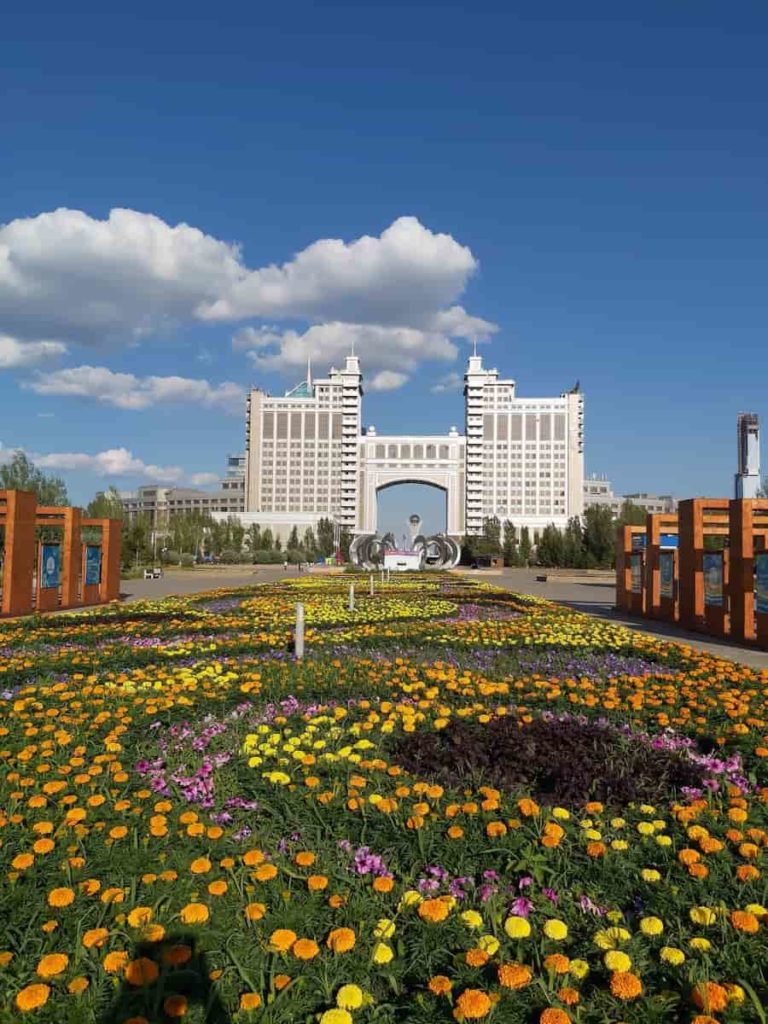Urban agriculture refers to cultivating fruits and vegetables in urban settings such as schools, backyards, and apartment balconies. To grow plants in an urban environment is to participate in urban gardening. While there is no unified definition of urban gardening, the practice is typically divided into container and rooftop gardening. Let’s check out more information about urban gardening ideas for beginners.
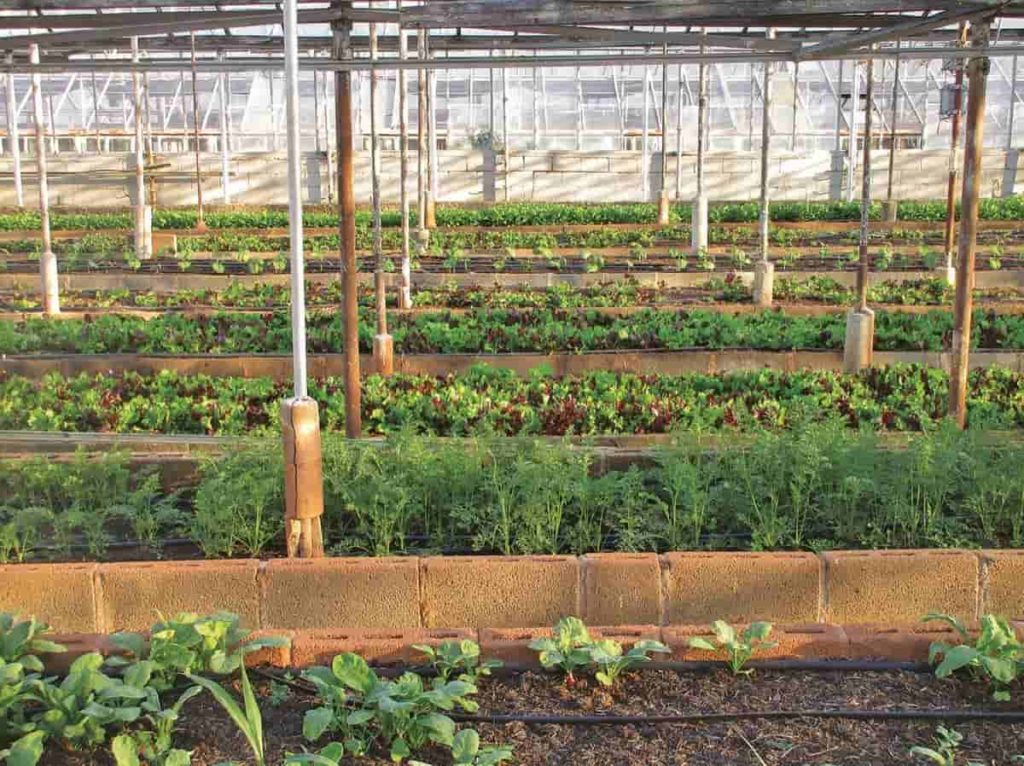
For those who have only a balcony or a backyard with limited space, container gardening is a popular option. They utilize anything from buckets and raised beds to window boxes. Growing plants on a building’s roof require nothing additional than the placement of soil and garden beds. Usually, vegetables and bigger plants are the focus of a rooftop garden. Plants need attention and care to develop, but fortunately, they can survive with just three ingredients: sunlight, soil, and water. Most plants will do quite well if kept in a pot rather than planted in the ground.
Urban gardening serves a variety of purposes besides simply providing food. Plants in the house or office have been shown to improve people’s moods, enhance their self-esteem, and reduce stress. In addition to the apparent health benefits of working outside in the fresh air and sunshine, urban gardeners also get additional fitness benefits from the many tasks involved in keeping a garden alive and thriving. Often urban gardening begins on a shared space, like a rooftop, where each person has their plot.
Urban gardening ideas for beginners
What plants are best for urban gardens?
- Ferns grow in shady areas in gardens. Since they grow in dark, wet conditions, you may use them to cover up any unattractive, torn areas at the end of your garden by planting them there.
- The Acer breed is another excellent selection for urban gardening. They develop slowly, making them ideal for little gardens that can be grown in a pot without the need for constant repotting. These plants can grow in partial light or a little bit of shade. They won’t take up much room, but they’ll make your yard look fantastic and add some much-needed colors.
- The Star Jasmine grows in full or partial shade, away from dry, cold winds, and retains its glossy leaves all winter long. Grow this plant vertically instead of horizontally to use your garden’s limited space better.
- Growing spinach in a container allows you to harvest the leaves before any pests may get to them. The optimal sunlight for spinach is six hours each day, although you can grow up with less. However, you might think about placing these vegetables on small racks that can be relocated when the sun moves during the day or year.
- Onions can be grown independently or in combination with spinach. A good companion plant can significantly enhance the growth of some plants. If you want to grow these vegetables successfully, choose a pot that is deeper than 8 inches and as broad as your growing area would allow.
In case you missed it: A Guide to Understand Vertical Urban Farming/Gardening: Check How this Helps Beginners
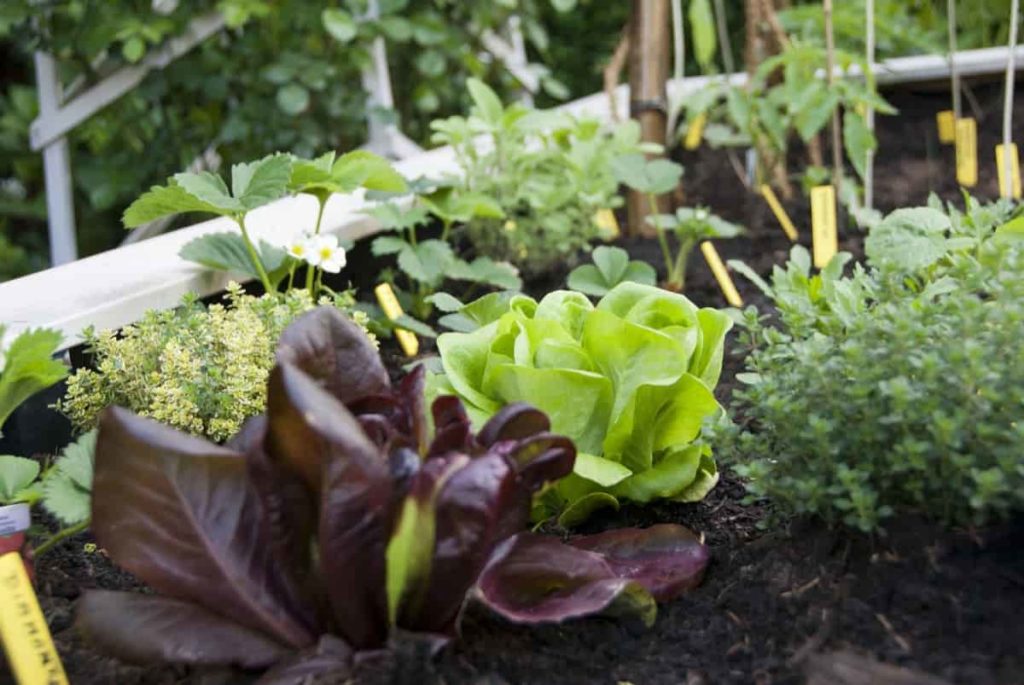
How do beginners start a garden?
- Sunshine is essential. The plant has to be placed where it will receive sunshine for at least six to eight hours each day. A Garden can be grown on the roof of a building. Aside from the typical places like gardens and greenhouses, they can also be grown in containers like window boxes, walkways, and hanging baskets on balconies.
- The depth of the soil plays an important role. Shallow-rooted plants need a minimum soil depth of 6 inches if they are less than 1 foot tall. It’s recommended to have at least 1 foot of soil depth for plants with deeper roots.
- Plants need proper drainage to prevent rotten roots. Pick a pot with drainage holes on the bottom. The composition of the soil is crucial. The soil used for planting is different from that used for gardening since it is more open and drains water more quickly.
- Keep in mind that your garden needs water. It’s crucial that every time you water, the entire container gets soaked. It’s essential that you don’t overwater, too. To avoid root rot, empty the saucer under the plant whenever it gets full.
What are some of the main items needed for urban gardening?
- Hand trowels: Raised beds, pots, and window box gardening benefit greatly from using hand tools. A hand trowel is mainly used to dig small holes and scoop soil. It contains a plastic, wooden, or metal handle and a curved metal or plastic blade that comes to a point on end. It’s also handy for transplanting seedlings and delicate flowers and removing weeds.
- Shovels: The gardener’s toolkit wouldn’t be complete without shovels and spades. A spade’s flat blade is designed for making holes, whereas a shovel’s rounder blade is more suited for working with dirt, manure, and fertilizer. If you can only have one tool, a shovel should be it. While it can still be used as a spade, this instrument has improved scooping and spreading capabilities.
- Hoes: A hoe is a handy tool. Raised beds, planting furrows, holes, hoeing, and hilling potatoes are just some tasks that hoes can assist with. Different kinds of hoes can be used for various purposes. The swan neck hoe, for example, has a curved handle that allows you to stand more upright, reducing the strain on your back, while others, like the oscillating hoe, are designed for a specific task, such as weeding.
- Hand pruners: A quality pair of hand pruners is a need for anyone who tends to trees, shrubs, roses, or perennial flowers. These plants’ delicate stems and branches can be cut using hand pruners.
In case you missed it: Organic Farming in the World: Check How this Guide Helps Beginners
How to put up an urban garden for crops suited for a home with limited space for planting?
- One of the best and most straightforward places to plant a garden is on a small terrace. Plants, soil, or foundation can be placed in one of several different-sized, elevated pots. As a result, you won’t need to use more workers and picky soil.
- A balcony is a more compact alternative to a terrace. As a result, rectangular window boxes, which are both basic and vertical, are the form of choice.
- Making use of recycled pallets to construct a vertical garden is an interesting possibility. The desired plant containers can be hung from the wall using the provided hardware. Those interested in cultivating a vertical garden from the height rather than the width can get special devices for hanging pots from specific shops.
What is organic urban gardening?
- To garden organically means to avoid the use of artificial inputs like chemical fertilizers and pesticides. To grow your garden organically, you must rely solely on natural means. Rather than depleting our natural resources, organic farming actually helps to replenish them.
- When you garden organically, you’re providing a different approach to ensuring the well-being of your plants and the garden as a whole. Organic gardening is a method of gardening that seeks to restore and maintain a healthy ecosystem by utilizing and restoring natural systems such as soil, water, humans, and insects.
- Organic agriculture requires focusing on three main areas to be successful. Soil care is handled by applying organic fertilizer, weeds are controlled by hand and using organic ground covers, and pests are kept at bay by using companion planting and encouraging beneficial insects.
In case you missed it: Best Practices to Grow Tamarind Trees: Check How this Guide Helps Beginners
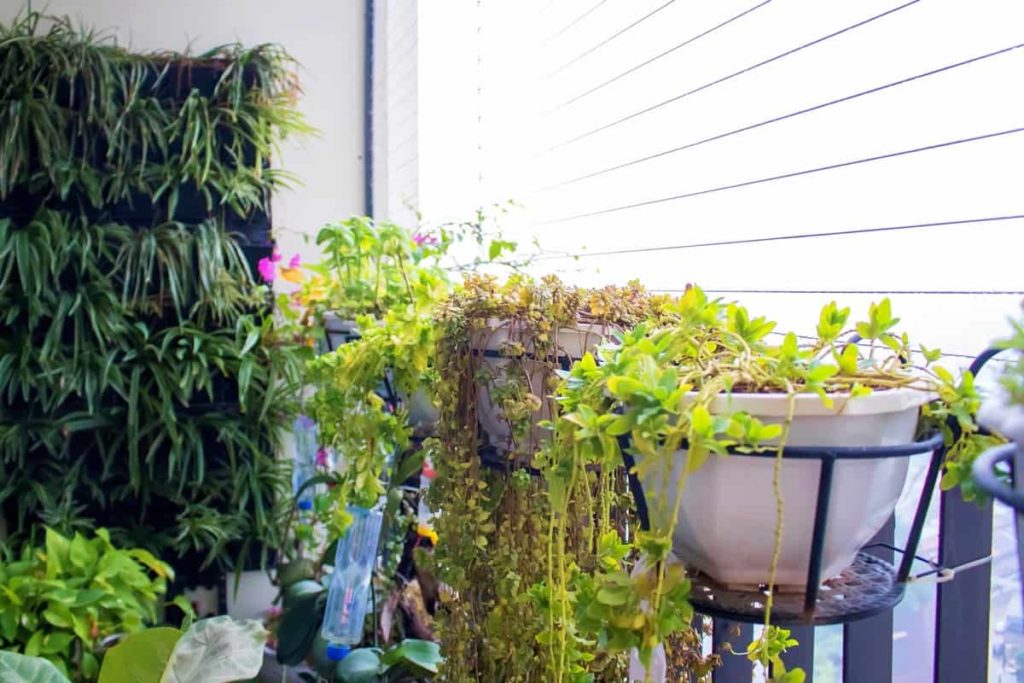
What is the importance of urban gardening?
- Urban gardening presents a viable option for solving the problem of feeding a growing global population on a decreasing amount of arable land. Simple food crops like vegetables and fruits can be grown in urban gardens, reducing the need for residents to purchase expensive products from farms or imports from other nations.
- Growing and selling one’s own food, vegetables, herbs, and fruits in an urban setting can boost the local economy. Therefore, new jobs are made available, food prices are lowered, and higher-quality foods are more widely consumed. Participating community members are more likely to add to the economy’s growth.
- By growing food in urban areas, you know it will be organic, “home-grown,” and free of synthetic chemicals like pesticides and herbicides. Simply put, it enables you and your loved ones to manage your nutrient intake.
- In addition to providing people with nutritious food, urban gardening also contains a component known as “horticulture therapy,” which is said to improve plant-human interactions and significantly lower stress, blood pressure, anger, and fear levels.
What are the five stages in gardening?
- Seed: It’s the most amazing phase of plant life because it produces abundant life while asleep. Today’s seeds are treated with chemicals and packaged before being sold, despite the fact that an adequately preserved seed can last for years. They survive the seeding process and eventually sprout. If you want to grow a beautiful plant, you should know that the kind of seed you pick will change depending on whether you plan to plant the plant indoors or outside.
- Germination: In the right conditions, a planted seed will sprout and develop into a full-fledged plant. Planting, or seedling, is the next stage after the seed germinates. As soon as the first two to four leaves appear after sowing the seed, the plant’s root system begins to develop below ground, and the stem and leaves begin to take form.
- Growth: The third phase of a gardening plant’s development is known as the growth phase. The growth phase of a plant’s life is a crucial one. When the seedling is ready, it is transplanted from the nursery into a much larger container or bed. From now till blooming, the plant requires a lot of food and water. At this point, the plant has developed numerous new stems and leaves.
- Reproduction: Reproductive structures, such as buds and flowers, have formed on the plant. At this stage, plants no longer create new growth, such as twigs, branches, or strips; instead, buds form at the branches’ tips, eventually blooming and producing fruit. Micronutrients, such as Sulphur and magnesium, are essential for the plant at this time.
- Pollination: Pollination occurs when pollen is transferred from a plant’s stamen to its stigma. Pollen can travel from one flower to another by the wind, but insects are also responsible for this transfer. It has been shown that certain kinds of bats help with pollination.
In case you missed it: Common Dairy Cattle Diseases, Symptoms, and Treatment: Check How this Guide Helps Dairy Farmers
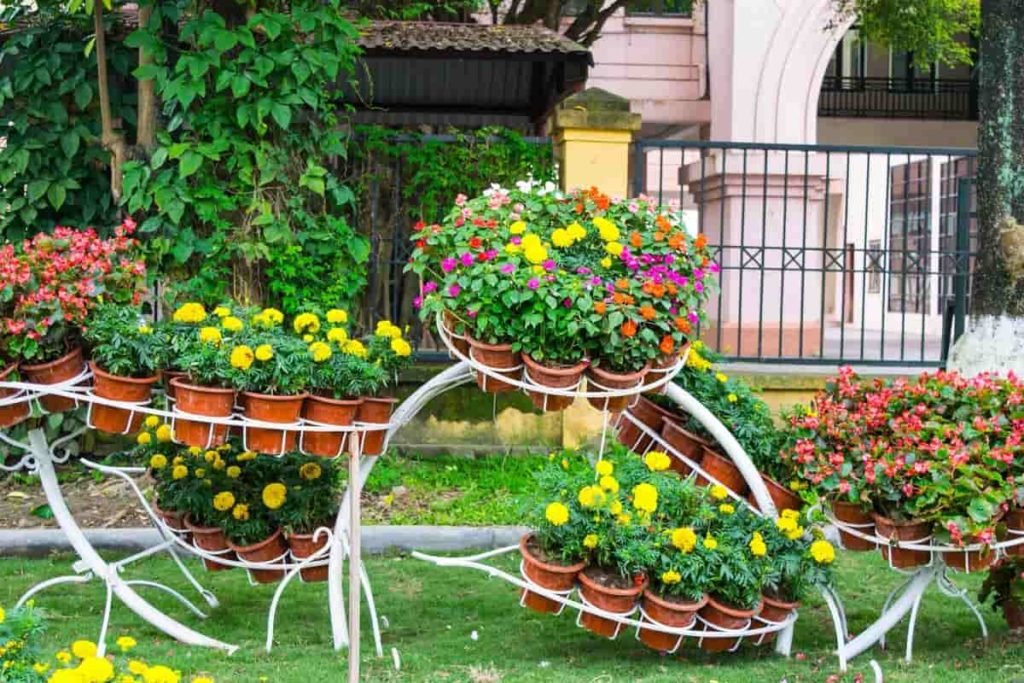
What are the different methods of urban gardening?
- Simply by situating themselves in an urban area, small family farms can provide food for supermarkets, farmer’s markets, and residents. These agricultural enclaves have the potential to improve local soil, lessen the impact of climate change, and increase air quality.
- Individuals who live or work in the same general region often come together to plant and take care of what is known as a “community garden.” This type of garden can be used for a number of purposes, including pollution control, carbon absorption, and the development of nutritious, locally grown produce. Volunteers who maintain such gardens get a cut of whatever they grow.
- Greenhouses were the origin of the modern, high-tech indoor farming innovations that are so popular today. Many have improved germination and yields by cultivating their plants in a confined environment where they can regulate factors such as light, temperature, fertilization, and more. The use of herbicides and pesticides may be made unnecessary by indoor farming.
- The term “vertical farming” refers to a method of urban food production in which crops are grown on multiple levels, as compared to a traditional, horizontal one, as is the case with conventional or greenhouse farming. The main advantage is that more food can be produced in the same amount of area, which is very useful in urban areas.
What are the benefits of urban farming?
- Urban gardening makes it possible for people in the area to take part in related activities. Communities can benefit from urban agriculture because it uses underutilized public spaces for farming and forestry.
- There are many ways in which urban gardening helps the planet. Through methods like aquaponics and street landscaping, it lessens the amount of water that is lost after a storm. It helps wildlife survive, cleans the air, and reduces the effects of an urban heat island.
- Fresh food is more accessible and more affordable thanks to urban gardening, which also provides consumers with alternatives to buying food, hence lowering the cost of living.
- Since fewer people are involved in the distribution chain from urban farms to consumers, less nutrient loss and food spoilage occur on the way to the table. Also, farms that practice urban agriculture don’t use chemicals to get rid of pests. This lowers the chance that people who eat the food or drink the water will be exposed to toxic substances.
In case you missed it: Best Practices to Grow Taro Root at Home: Check How this Guide Helps Beginners
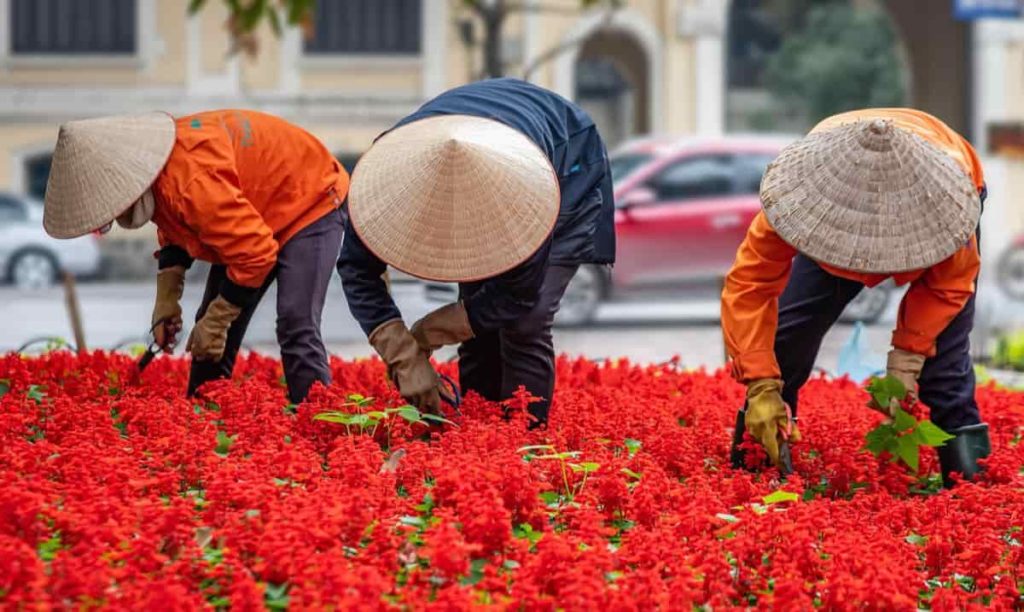
Conclusion
The degree of economic and social development is often reflected in urban gardening. Food security and food safety can be enhanced in any case by increasing access to locally grown fruits and vegetables through urban gardening. With urban agriculture, there is a real chance of bringing locally grown food to city dwellers.
In addition to satisfying customers’ demand for locally sourced products, this strategy may improve the overall quality and variety of consumers’ diets. However, the success of urban agriculture depends on the favorable attitudes and reactions of the local population.
- Profitable Village Farming Business Ideas in 2024
- High-Yield Aquaculture: Fast-Growing Fish for Farming
- Effective Fish Pond Construction Techniques for Beginners
- Irrigation and Water Management in Pineapple Farming
- Blossom to Harvest: Mastering Flowering and Pollination in Papaya Farming
- Pig Fattening Essentials: From Selection to Sale for Beginners
- Raising Wagyu Cattle: A Complete Guide for Premium Beef Production
- Soil Types and Their Water Holding Capacity
- Optimizing Irrigation Schedules for Coconut Groves for Enhanced Yield
- Espresso Your Garden: Coffee Grounds for Healthier Acid-Loving Plants
- The Best Soil Mix for Snake Plants: How to Mix Your Own Snake Plant Soil
- Green Thumb Success: Expert Tips for Cultivating Greenhouse Beans All Year Round
- Bloom All Year Round: The Ultimate Guide to Indoor Hyacinth Care
- Eco-Friendly Gardening: How to Make Liquid Fertilizer from Kitchen Waste
- Ultimate Guide to Grow Anise in Pots: Explore Seed Propagation to Harvesting
- Guide to Raising Chester White Pigs: Discover Breed Facts to Growth Management
- Mastering the Elegance: The Ultimate Guide to Weeping Cherry Tree Care, Planting, and Maintenance
- Ultimate Guide to Planting Garlic in Grow Bags: Growing Strategies for Beginners
- How to Fix Spider Plant Leaf-Related Problems: Natural and Organic Remedies
- 10 Reasons Why Your Tulsi Plant is Shedding Leaves: Home Remedies and Solutions
- Optimizing Growth and Yield: The Advantages of Palm Bunch Ash Fertilizer
- Utilizing Neem Oil Extract as a Natural Pesticide for Hydrangea
- From Soil to Harvest: Various Ways in Which Farmers Can Use AI Tools
- Steps to Encourage and Induce Citrus Flowers: A Comprehensive Guide
- How to Fix Snake Plant Leaf-Related Issues: Natural and Organic Remedies
- Transform Your Garden into a Fragrant Oasis with Raat Ki Rani (Night Blooming Jasmine)
- Discover the Ideal Chicken Breeds for Philippine Farms
- How to Create a Poultry Egg Farm Business Plan for Profits
- Grow Lemon Cucumbers Like a Pro: Insider Techniques for Bountiful Yields
- Ultimate Guide to Caring for Your Pink Princess Philodendron: Tips for Thriving Variegation
- Areca Nut Profit Per Acre: Calculating Yield and Cost of Cultivation
- How Kaveri Chicken is Becoming a More Profitable Breed in Indian Backyards
- Transform Your Barn: 9 Steps to Convert a Horse Stall into a Chicken Coop
- Exploring Suffolk Sheep Disadvantages with Limitations and Challenges
- Guide to Solving Potted Lemon Tree Problems: How to Revive Lemon Tree in Containers
- Steps to Encourage Female Pumpkin Flowers: Best Strategies for More Flowers and High Yields

